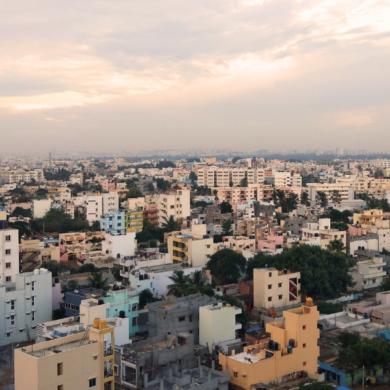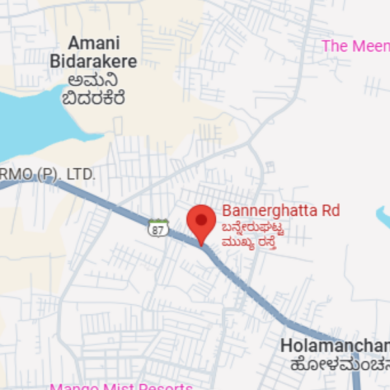
Get a complete insight into stamp duty in India—its role in property ownership, calculation methods, payment timelines, state-wise rates, and smart ways to minimise your expenses.
Buying a property involves more than selecting the right location or developer—it also means understanding legal costs that affect your total investment. One such cost is stamp duty, a mandatory fee that legally validates your ownership. By knowing how stamp duty in India apply, you avoid surprises during registration and gain clarity on government dues linked to your transaction. Whether you are investing in a home or commercial asset, factoring in stamp duty on property purchase helps you plan better and ensure compliance at every step.
In this blog, explore the meaning of stamp duty, how and when it is paid, factors influencing the amount, state-wise rates, exemptions available, and key tips to optimise your property transaction.
Table of Contents
What is Stamp Duty?
Stamp duty is a government-levied tax that legally validates your property transaction by documenting the change in ownership. It must be paid on the sale deed or agreement to make the purchase legally enforceable and acceptable in court.
Why is Stamp Duty Important in Property Transactions?
Stamp duty plays a pivotal role in making your property deal legally binding and officially recognised by the state. While most buyers focus on location and pricing, overlooking stamp duty on property purchase can lead to avoidable legal and financial setbacks. Here is why property stamp duty is important in every real estate transaction:
- Confirms legal ownership
Payment of stamp duty charges gives legal recognition to the transaction, ensuring your name is lawfully recorded as the property owner. - Enables property registration
Registration authorities require payment of stamp duty before executing the sale deed, without which the transfer cannot be officially registered. - Protects against legal disputes
A properly stamped document becomes admissible in court. This protects your ownership in case of disagreements or claims in the future. - Establishes transaction transparency
By applying the applicable stamp duty rates, the government ensures accountability in property deals, reducing chances of underreporting or fraud. - Ensures compliance with state laws
As stamp duty in India varies by state, timely payment confirms your adherence to regional property laws, avoiding penalties or interest later.
When and How is Stamp Duty Paid?
Understanding the timing and process of paying stamp duty helps streamline your property registration and avoids unexpected delays or penalties. Here is how and when stamp duty on property purchase is paid:
- Timing of Payment
Most states require stamp duty to be paid either before or at the time of executing the sale deed. Registration authorities will not proceed without proof of payment. - Accepted Payment Methods
Buyers can choose from multiple payment options:- E-stamping through authorised government portals,
- Franking, where an authorised bank stamps the document,
- Physical stamp paper purchase for manual agreements.
- Responsibility of Payment
In most cases, the buyer bears the full cost. However, stamp duty rates and responsibilities can be mutually decided in the sale agreement. If both parties agree, the cost can be shared.
Factors Affecting Stamp Duty Fee
Stamp duty is not a fixed cost—it varies based on specific parameters that define the property and buyer profile. The stamp duty in India is fixed by state authorities. They apply different rules that influence how much you will pay during a property transaction. Here are the key factors that impact your property stamp duty:
- Property Value
Higher property values attract higher stamp duty. Charges are typically calculated as a percentage of the property’s market or circle rate, whichever is higher. - Location
Stamp duty differs from state to state and can even vary between urban and rural zones within the same state. Municipal corporations may levy additional surcharges in city areas. - Type of Property
Whether the property is residential, commercial, or agricultural directly affects the duty rate. Commercial properties usually attract higher charges due to their business utility. - Buyer Category
Some states offer reduced rates for women buyers, senior citizens, and first-time homeowners. This encourages broader property ownership and supports specific social segments.
How is Stamp Duty Calculated?
The calculation depends on the property’s value, location, type, and the applicable stamp duty rates in that specific state. Authorities usually apply a percentage rate on the higher of the declared transaction value or the circle rate (also known as guideline value). Always check the latest rates issued by the state’s registration department before finalising a property transaction. Here is a simple example to illustrate how stamp duty on property purchase is computed:
You are buying a residential flat in Pune, Maharashtra.
- Agreement value: ₹80,00,000
- Circle rate: ₹75,00,000
- Applicable stamp duty rate: 6%
Since the agreement value is higher than the circle rate, the stamp duty is calculated on ₹80,00,000.
Stamp Duty = ₹80,00,000 × 6% = ₹4,80,000
Also Read: Stamp Duty Charges in Pune
Stamp Duty and Registration Fees Across Indian States (2025)
Here is a comprehensive table summarising the stamp duty and registration charges across major Indian states in 2025, along with the official Registration Department website links for each state:
| State | Stamp Duty Fees (2025) | Registration Fess (2025) |
| Maharashtra | 6% (urban/municipal), 4% (municipal council/MMRDA), 3% (Gram Panchayat) | 1% of property value |
| Karnataka | 5.6% (urban, incl. cess/surcharge), 5.65% (rural); 3% for properties up to ₹45 lakh, 2% for < ₹20 lakh | 1% of property value |
| Tamil Nadu | 7% of property value | 1% of property value |
| Kerala | 8% of property value | 2% of property value |
| Delhi | 6% (male), 4% (female), 5% (joint); varies by area (e.g., NDMC: 5.5% male, 3.5% female, 4.5% joint) | 1% of property value |
| Haryana | 7% (urban), 5% (rural); 5% (female), 3% (rural female) | 1% of property value |
| Telangana | 4% of property value | 0.5% of property value (min ₹1,000) |
| Gujarat | 4.9% of property value | 1% of property value |
| Uttar Pradesh | 7% of property value | 1% of property value |
| West Bengal | 5% (rural), 6% (urban); 1% less for properties up to ₹1 crore | 1% of property value |
Stamp Duty vs Registration Charges
| Aspect | Stamp Duty | Registration Charges |
| Definition | A tax levied by the state government to validate the sale or transfer of property. | A fee paid for officially recording the property document with the registrar. |
| Purpose | Confirms the legality of property transfer and ownership rights. | Ensures your ownership is entered in public records for future reference. |
| Applicable On | Sale deed or property transfer agreement. | Registered document of sale or transfer. |
| Payable To | State government revenue department. | Sub-registrar office. |
| Typical Rate | Varies by state (e.g., 4%–7%) and based on property type and buyer profile. | Usually 1% of the property value (subject to state rules). |
| Mandatory | Yes, without it the transaction is not legally valid. | Yes, registration is incomplete without this fee. |
Concessions and Exemptions
Many Indian states offer targeted concessions on stamp duty charges to promote inclusive homeownership and support specific buyer categories. Knowing these exemptions helps you reduce the overall cost of property stamp duty and plan your investment more efficiently. Below are key concessions commonly available under stamp duty in India:
- Women Homebuyers
Many states such as Delhi, Punjab, and Haryana offer lower stamp duty rates for women, encouraging female ownership and empowering families financially. - Joint Ownership with Women
If a property is registered jointly with a woman, the reduced stamp duty rate may still apply, offering meaningful savings on large transactions. - First-Time Buyers
Select states extend benefits to first-time buyers under housing schemes, reducing the burden of initial investment. - Agricultural Land
In some regions, concessions apply on the purchase of agricultural land, particularly for farmer categories or for those converting land use for cultivation. - Government Schemes
Under central and state housing initiatives, developers may partner with authorities to provide reduced property stamp duty as part of the package. - Senior Citizens and EWS
Specific provisions may be available for senior citizens and economically weaker sections (EWS), subject to eligibility and documentation.Also Read: Stamp Duty Charges in Hyderabad
Penalties for Non-payment or Underpayment
Failing to pay the correct stamp duty on property purchase can lead to serious financial and legal consequences. Here are the key penalties associated with non-payment or underpayment:
- Heavy Penalty Charges
Authorities may impose a penalty of up to 10 times the deficit amount, depending on the state laws and the delay period. - Interest on Outstanding Duty
In addition to the penalty, you may need to pay interest on the unpaid duty at a prescribed rate until full payment is made. - Legal Inadmissibility
An unstamped or insufficiently stamped document is not admissible in court, making it difficult to enforce ownership or resolve disputes. - Delayed Property Registration
Underpaid or unpaid stamp duty can halt the registration process, impacting possession and transfer timelines. - Impact on Future Transactions
Any irregularity in stamp duty fees paid will reflect during resale or transfer, potentially affecting the property’s legal standing and marketability.
Tips to Save on Stamp Duty
While stamp duty in India is mandatory, there are smart ways to reduce the overall cost of your property transaction. Applying these strategies can help you lower the burden of property stamp duty and optimise your investment. Here are some effective tips to save on stamp duty:
- Register the Property in a Woman’s Name
Many states offer lower stamp duty charges for female buyers. You can save significantly by purchasing the property individually or jointly in a woman’s name. - Opt for Joint Ownership
Registering the property jointly with a spouse or parent—especially when one of the owners qualifies for a concession—may help reduce your stamp duty outflow. - Choose Property in Rural or Semi-Urban Areas
Stamp duty in non-metro areas are usually lower than those in city limits. If the location suits your needs, this choice can result in considerable savings. - Utilise Government Schemes
Look out for housing or Pradhan Mantri Awas Yojana-linked projects where reduced stamp duty charges are part of the benefits package. - Time the Purchase Around Concession Periods
Some states announce temporary stamp duty reductions during festivals or fiscal year-end periods. Buying during these windows can lead to meaningful savings.
Conclusion
Stamp duty in India is a key legal and financial component of any property transaction in India. From confirming ownership to ensuring court admissibility, its timely and accurate payment safeguards your investment.
By understanding applicable charges, calculating costs accurately, and exploring eligible exemptions, you gain better control over your purchase. Always factor in stamp duty while budgeting to avoid last-minute surprises and ensure a smooth, legally compliant registration process.
FAQs
1. What is stamp duty in a property transaction?
Stamp duty in a property transaction refers to the tax imposed by the state government to legalise the transfer of ownership. It validates the agreement and ensures the transaction is enforceable by law.
2. When and how is stamp duty paid?
Stamp duty is paid either before or at the time of property registration, using methods like e-stamping, franking, or physical stamp papers. The registrar will not accept the documents without proof of payment.
3. How is stamp duty calculated on a property purchase?
Stamp duty on a property purchase is calculated as a percentage of the higher value between the agreement amount and the circle rate. The exact rate depends on the location, property type, and state-specific rules.
4. Who is liable to pay stamp duty – buyer or seller?
The buyer is typically liable to pay stamp duty in most transactions. However, the cost may be shared if both parties agree and document it clearly in the sale deed.
5. What is the difference between stamp duty and registration charges?
The difference between stamp duty and registration charges lies in their purpose—stamp duty is a tax to validate ownership, while registration charges cover the cost of recording the document with the registrar. Both are legally mandatory.
6. Are stamp duty rates the same in all Indian states?
Stamp duty rates are not the same across all Indian states; they vary by location, property type, and buyer category. Urban and rural zones within the same state may also follow different rates.
7. Are there any stamp duty concessions for women or first-time buyers?
Yes, there are stamp duty concessions for women and first-time buyers in many Indian states. These include reduced rates to encourage ownership and make property investment more accessible.
8. Is stamp duty applicable on inherited or gifted property?
Stamp duty is generally not applicable on inherited property but may apply to gifted property depending on the relationship between the donor and recipient. Each state sets its own rules for such transactions.
9. Can I get a refund if a property deal falls through after paying stamp duty?
Yes, you can get a refund if a property deal falls through, provided you apply within the timeframe defined by the state’s stamp authority. Valid documentation and cancellation proof are required.
10. What are the consequences of not paying or underpaying stamp duty?
The consequences of not paying or underpaying stamp duty include hefty penalties, interest charges, and the document being deemed inadmissible in legal proceedings. This may also delay property registration and ownership transfer.








